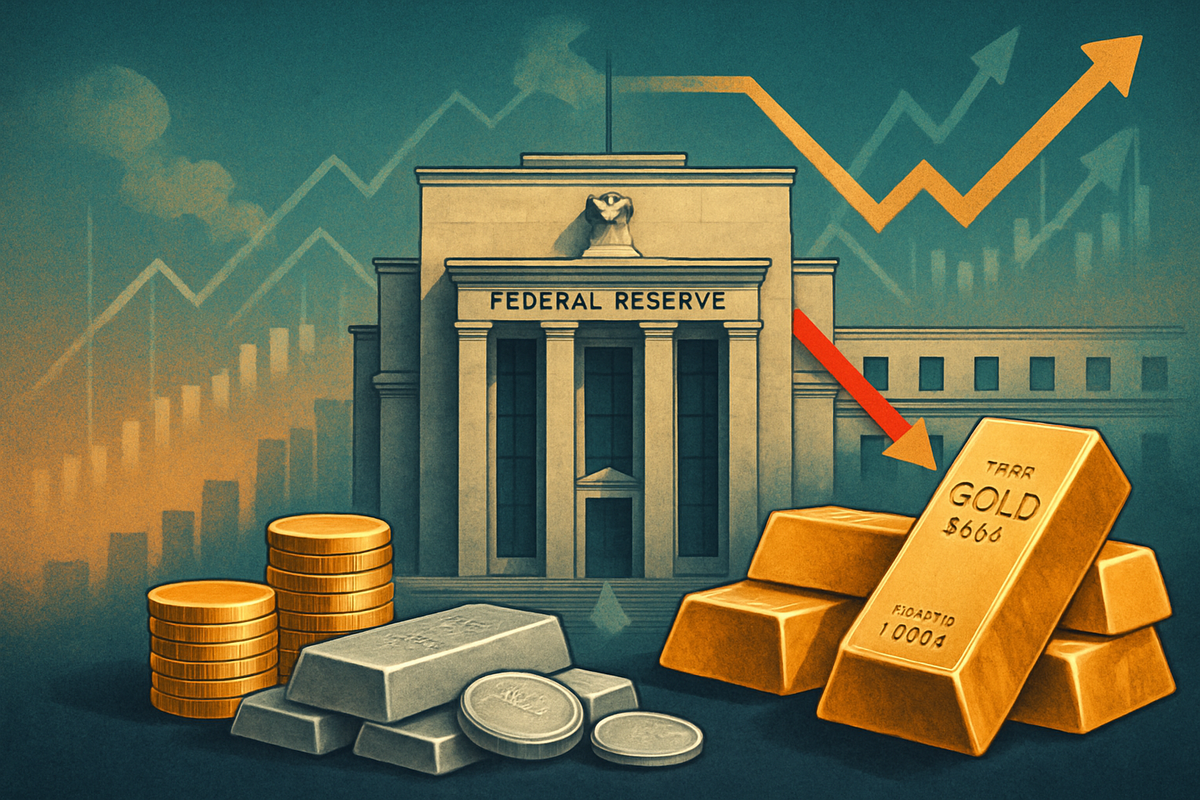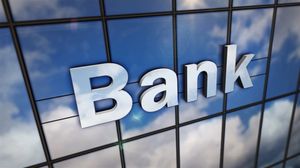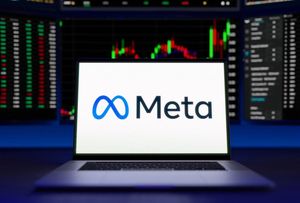
As of October 20, 2025, market participants are keenly focused on the US Federal Reserve's anticipated monetary policy decisions, which are widely expected to include further interest rate cuts. This dovish pivot by the central bank is sending ripples through the financial markets, with gold and silver prices experiencing significant upward momentum. The underlying principle driving this reaction is the inverse relationship between interest rates and the attractiveness of non-yielding assets, coupled with the broader implications for currency strength and inflation expectations.
The current climate of economic uncertainty, marked by a softening labor market and concerns over global economic growth, has prompted the Federal Reserve to prioritize stimulating economic activity through lower borrowing costs. This strategic shift is making precious metals increasingly appealing to investors seeking a safe haven and a hedge against potential currency debasement, propelling both gold and silver to multi-year highs and even record valuations.
Fed's Easing Cycle: A Detailed Look at the Road to Lower Rates
The current trajectory of the US Federal Reserve's monetary policy, characterized by a series of interest rate cuts, is a culmination of evolving economic indicators and a proactive stance to bolster the economy. As of October 20, 2025, the market is bracing for another quarter-point reduction in the federal funds rate, a move that would set the new target range between 3.75% and 4%. This anticipated cut follows a prior reduction in September 2025, which itself was the first such decrease since December 2024, signaling a definitive shift from the tightening cycle of earlier years.
The timeline leading to this moment reveals a gradual but determined pivot by the Federal Open Market Committee (FOMC). Throughout late 2024 and early 2025, while inflation remained a concern, signs of economic deceleration began to emerge, particularly in the labor market. By mid-2025, official statements and economic projections from the Fed began to hint at a more accommodative stance. The September 2025 rate cut solidified these expectations, and the upcoming October 28-29 FOMC meeting is now almost universally expected to deliver another 25-basis-point reduction. Beyond this, projections extend into 2026, with forecasts suggesting an additional 50-75 basis points of cuts, potentially bringing the federal funds rate to a range of 3.50%-3.75% by the end of next year. Key players in these decisions include Federal Reserve Chair Jerome Powell, the twelve members of the FOMC, and various regional Federal Reserve Bank presidents, all of whom contribute to the consensus on monetary policy.
The primary driver behind these easing measures is the Fed's dual mandate: to achieve maximum employment and price stability. While "core" Personal Consumption Expenditures (PCE) inflation stood at 2.9% in August 2025—slightly above the Fed's 2% target—policymakers have largely attributed this to specific factors like tariffs rather than broad-based inflationary pressures. This assessment has allowed the Fed to prioritize addressing nascent weaknesses in the labor market and stimulating overall economic activity. The ongoing US government shutdown is also injecting an additional layer of economic uncertainty, further reinforcing the Fed's inclination towards a more dovish policy.
Initial market reactions to these anticipated and enacted rate cuts have been overwhelmingly bullish for precious metals. Gold prices have not only surpassed previous record highs but have also breached significant psychological barriers, trading above $4,000 and even reaching $4,300 per ounce. Silver has mirrored this upward trend, hitting record highs near $54.86. This surge is fueled by reduced opportunity costs of holding non-yielding assets, a weaker US dollar making dollar-denominated commodities more attractive, and heightened safe-haven demand amidst economic uncertainty and persistent geopolitical tensions. Analysts are now forecasting continued support for gold, with some projections reaching $5,000 per ounce, though warnings of potential consolidation or mild corrections are also present if the rally becomes overextended.
Corporate Fortunes: Winners and Losers in the Precious Metals Sector
The US Federal Reserve's dovish monetary policy, particularly its series of interest rate cuts, is creating a distinct landscape of winners and losers within the precious metals sector. The primary beneficiaries are, unequivocally, established gold and silver mining companies and those operating in the streaming and royalty space, while firms burdened by high debt or facing specific industrial demand challenges might find the environment more complex.
The most direct impact on mining companies stems from the surging prices of gold and silver. As these commodity prices climb, mining companies experience a significant boost in their top-line revenue. This effect is amplified by "operational gearing," where relatively fixed production costs mean that a larger proportion of incremental revenue from higher prices flows directly to profit margins. Companies like Barrick Gold (NYSE: GOLD) and Newmont (NYSE: NEM) are prime examples of those capitalizing on this trend. Barrick, with its robust balance sheet and net cash position, is well-equipped to leverage higher prices while maintaining cost control. Newmont has also seen its stock surge, driven by record gold prices, strong cash flow, and strategic divestitures aimed at enhancing margins. These established producers, with their existing infrastructure, can immediately monetize the higher prices, translating directly into improved earnings and cash flow.
Beyond revenue, lower interest rates significantly reduce the cost of borrowing for these capital-intensive operations. Mining companies often rely on substantial debt financing for exploration, development, and ongoing operations. Reduced interest expenses on existing variable-rate debt improve cash flow, and it becomes cheaper to secure new loans for strategic initiatives such as acquisitions, expansions, or further exploration. This financial flexibility allows companies to invest more in future growth, potentially extending the lifespan of their mines or developing new deposits. Streaming and royalty companies, such as Wheaton Precious Metals (NYSE: WPM), are particularly well-positioned. Their business model involves providing upfront financing to miners in exchange for the right to purchase future production at a fixed, low cost, or for a royalty. This structure offers significant leverage to rising commodity prices without direct exposure to the operational costs and risks of mining, leading to substantial earnings growth during precious metal booms. Junior mining and exploration companies also stand to benefit, as higher commodity prices can make previously marginal deposits economically viable, potentially attracting investment or making them attractive acquisition targets for larger producers.
Conversely, while the overall environment is favorable, companies with exceptionally high debt levels and poor cost control may still face challenges. Even with lower interest rates reducing borrowing costs, if their operational inefficiencies or other production costs (e.g., energy, labor, regulatory compliance) remain elevated, they might struggle to fully capitalize on the price increases. Furthermore, while silver benefits from its monetary hedge status, its dual role as an industrial metal means that companies heavily reliant on industrial demand could face headwinds if the economic slowdown prompting rate cuts leads to a significant decline in industrial consumption. However, robust demand from sectors like renewable energy, where silver is a critical component, can mitigate this risk. In essence, while the rising tide of precious metal prices lifts many boats, those with stronger fundamentals and efficient operations are poised to sail much further ahead.
Wider Significance: A New Era for Precious Metals
The US Federal Reserve's dovish monetary policy, characterized by ongoing interest rate cuts, carries a wider significance that extends far beyond immediate price movements, reshaping broader industry trends for gold and silver and potentially influencing global financial architecture. This policy stance, prioritizing economic growth and employment through lower rates and increased liquidity, is fundamentally altering the investment landscape for precious metals.
This event fits squarely into several overarching industry trends. Firstly, it amplifies the increased investment demand for gold and silver. With lower interest rates reducing the opportunity cost of holding non-yielding assets, both institutional and retail investors are flocking to precious metals. This is evident in strong inflows into precious metal ETFs, with gold holdings reaching a three-year high and silver holdings a 3.25-year high recently. Furthermore, central banks globally are consistently net buyers of gold, diversifying their reserves amidst rising government debt and currency volatility, further solidifying institutional demand. Secondly, silver's unique "dual-fueled rally" is a significant trend. Beyond investment demand, booming industrial consumption, particularly from the green energy transition (solar panels, electric vehicles, energy storage), is creating inelastic demand. This, coupled with persistent structural supply deficits for seven consecutive years, provides a robust, differentiating bullish catalyst for silver. Some analysts even suggest that the current environment is positioning gold and silver in the third and most explosive phase of a bullish supercycle, signaling a long-term re-rating of precious metals in global asset allocation.
The ripple effects of this dovish policy are pervasive. For competitors, particularly cryptocurrencies like Bitcoin, the traditional appeal of physical gold and silver as time-tested safe havens during crises can divert capital that might otherwise flow into the crypto market. While crypto may offer "digital gold" characteristics, the tangible security of physical precious metals often holds sway during profound economic uncertainty. For partners in the mining ecosystem, such as equipment suppliers, engineering firms, refiners, and dealers, increased mining activity and demand translate into higher business volumes. However, industries heavily reliant on silver, such as solar panel and EV manufacturers, might face increased costs due to sustained high silver prices, potentially accelerating innovation in material science to find alternatives or more efficient uses. The jewelry and luxury goods sector may see mixed impacts, with rising perceived value potentially boosting demand for investment pieces, but sustained high prices potentially deterring everyday consumer purchases.
Regulatory and policy implications are also emerging. The sustained flight to precious metals amidst persistent inflation could intensify scrutiny on central banks globally, including the Federal Reserve, regarding the effectiveness of their monetary policies. There could be increased pressure to reassess inflation management strategies. Moreover, silver's critical role in green technologies is leading to its increasing recognition as a "strategic metal," potentially influencing trade policies, strategic reserves, and domestic mining incentives. Discussions about potential US government gold policy evolution, including direct market acquisition or revaluation of existing reserves, driven by unsustainable debt dynamics, are also gaining traction, reminiscent of historical precedents like the 1934 Gold Reserve Act which revalued gold from $20.67 to $35 per ounce. Historically, periods of significant monetary easing, negative real interest rates, and sustained central bank gold purchases have consistently correlated with strong performance in gold and silver, validating the current market dynamics. The current rebound after recent volatility further echoes past patterns of strong underlying demand for precious metals during crises, cementing their role as critical assets in times of economic and geopolitical flux.
What Comes Next: Navigating the Golden and Silvery Horizon
The US Federal Reserve's dovish monetary policy has set a clear trajectory for gold and silver, pointing towards continued strength in the precious metals market, albeit with anticipated periods of volatility. Market participants must strategically adapt to capitalize on emerging opportunities and mitigate potential challenges in both the short and long term.
In the short term (next 6-12 months), the outlook for both gold and silver remains largely bullish. The anticipated further rate cuts by the Fed and the conclusion of its quantitative tightening program by December 2025 are expected to provide strong tailwinds. Analysts project gold to target $4,400-$4,500 per ounce by year-end 2025, potentially reaching $4,600 by June 2026. Silver, with its dual appeal, is expected to continue its outperformance, eyeing $60-$75 per ounce by year-end. However, investors should anticipate increased volatility and potential short-term corrections (10-20% for silver, 10-15% for gold) as profit-taking occurs after the recent record highs. These pullbacks are generally considered healthy within a broader uptrend and could present strategic buying opportunities, with key support levels at $4,000 for gold and $50 for silver. Further liquidity injections, escalating geopolitical conflicts, or a dramatic weakening of the US dollar could act as immediate catalysts, potentially pushing gold towards $5,000-$6,000 and silver to $60-$78.
The long-term possibilities (beyond 12 months) for gold and silver are even more compelling. Structural factors such as sustained global economic uncertainty, persistent inflation concerns, ongoing de-dollarization trends among central banks, and robust industrial demand for silver are expected to drive sustained appreciation. Major financial institutions like Goldman Sachs and Bank of America forecast gold reaching $4,900 and $5,000 per ounce, respectively, by the end of 2026, with more aggressive long-term projections suggesting gold could reach $7,000 by 2025 or even $10,000 by 2030 under persistent current conditions. Silver's long-term potential is particularly noteworthy, with some analysts predicting it could reach $90 by the end of 2026, $100 in 2027, and potentially $250 by 2035, driven by its unique industrial demand and a significant technical breakout. A continued weakening of the US dollar, potentially seeing the Dollar Index (DXY) decline towards 90.00, would further fuel this long-term bull market.
Market participants will need to implement strategic pivots. Experts are suggesting a shift from traditional 60/40 portfolios (60% equities, 40% fixed income) to a 60/20/20 allocation, incorporating a 20% allocation to gold and silver as a more resilient inflation hedge and safe haven. A "buy on dips" strategy will be crucial for accumulation during expected periods of volatility. Opportunities abound, including enhanced safe-haven appeal, inflation hedging, strong industrial demand for silver, and continued central bank accumulation. However, challenges include short-term price volatility, the unlikely but possible risk of an unexpected Fed hawkish pivot, a stronger-than-expected rebound in the US dollar, and potential regulatory scrutiny amidst acute physical market tightness, particularly in silver. Investors should closely monitor upcoming US CPI data, labor market reports, and Federal Reserve communications, alongside geopolitical developments and global supply chain indicators, to navigate these dynamic markets.
Wrap-Up: A Golden Age Amidst Uncertainty
The US Federal Reserve's decisive pivot towards a dovish monetary policy, marked by successive interest rate cuts and the impending conclusion of quantitative tightening, has profoundly reshaped the landscape for precious metals. As of October 2025, the key takeaway is the unprecedented surge in gold and silver prices, driven by a confluence of reduced opportunity costs, heightened safe-haven demand, and robust central bank accumulation. Gold has breached the $4,250 per ounce mark, with silver nearing $54 per ounce, reflecting significant year-to-date gains that underscore their renewed appeal as essential assets in a volatile global economy.
Moving forward, the market is poised for continued "risk-on" sentiment, yet underpinned by persistent volatility and nuanced signals. Equity markets have shown resilience, buoyed by the prospect of cheaper borrowing and increased liquidity. However, the Federal Reserve's ongoing commitment to stimulating the labor market, even as inflation hovers above its 2% target, signals a sustained period of accommodative policy. This environment is expected to keep the US dollar weaker, further bolstering dollar-denominated commodities like gold and silver. The structural demand for gold from global central banks, particularly from BRICS nations seeking greater financial autonomy, provides a robust long-term floor for prices, signifying a potential shift in global financial architecture.
The significance and lasting impact of this period cannot be overstated. The Fed's dovish stance, coupled with geopolitical fragmentation and economic uncertainties, is re-establishing gold and silver as critical hedges against currency debasement and inflation. This is not merely a cyclical upturn but potentially a long-term re-rating of precious metals in global asset allocation strategies, driven by deep-seated systemic pressures. The ability of central banks to navigate future economic downturns, potentially with an elevated balance sheet, will be a lasting legacy of this era, highlighting the delicate balance between fostering growth and maintaining financial stability.
For investors, the coming months demand vigilance. Key indicators to watch include further Federal Reserve communications and actions, particularly the pace of future rate cuts and the formal conclusion of quantitative tightening. Inflation and labor market data, such as CPI, PCE, unemployment rates, and payroll growth, will be crucial in discerning the Fed's next moves. Geopolitical developments, including ongoing conflicts and evolving trade relations, will continue to fuel safe-haven demand. Monitoring central bank gold purchases, corporate earnings, and yield curve movements will provide deeper insights into market sentiment and economic health. While short-term volatility is expected, the overarching bullish momentum for gold and silver is largely anticipated to continue, with many analysts projecting gold to reach $4,400 per ounce by year-end 2025 and potentially peak near $4,600 by June 2026.
This content is intended for informational purposes only and is not financial advice






